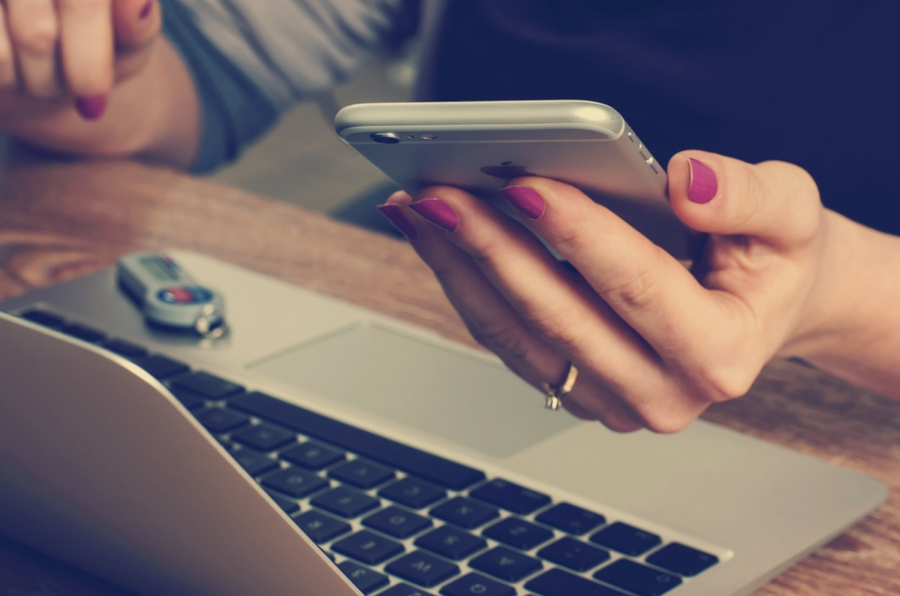Digital Nutrition
November 18, 2021
Imagine the alarm ringing at 6:30 in the morning to wake you up for the school day. You extend your hands, groping around the nightstand while knocking over your impressive stack of accumulated water bottles until you finally find the buzzing phone that you’ve put on snooze for the last ten minutes. You see that there’s a notification from Facebook and check your phone with anticipation because maybe, just maybe, someone texted you some juicy gossip about what happened to Rebecca and her boyfriend. You check your notifications, only to realize that it was just Facebook reminding you that it was your deceased aunt’s birthday.
You probably don’t need to imagine this, because for many people, including me, this is a daily occurrence (not that I have many deceased aunts). The phone is usually the first item people reach for when they wake up in the morning. Whether you’re in class, out of class, in the bathroom, in bed, or out of bed, we are never far from the digital world. Because of this, people are constantly on their devices which are detrimental to their brain and bodies. Too much time on devices can lead to physical and mental issues such as long term eye vision problems, continuous body strain injuries, lower psychological well being, lower self confidence, less emotional stability, and more. The solution? A digital detox.
Just like any detox, people restrict themselves from something that may be considered harmful. Thus, digital detoxing is essentially removing yourself from the world of electronics. Doing a digital detox is akin to running a marathon. You can’t show up on race day without training and expect to run a full twenty six miles; you have to prepare—mentally and physically.
The first thing I would suggest is selecting a reasonable time length for a detox. Although you might see larger benefits when partaking in a long-term detox, you will also be able to see benefits from short-term ones as well, especially because it is more likely you will actually stick with it. Be realistic. You won’t be able to detox while school is in full swing, so start on a weekend or vacation when you don’t have much work to do. And if you do have some work, finish it before you begin the detox so that you aren’t tempted to quit early. The length of the detox should vary based on how long you want to challenge yourself and how long you think is healthy based on your circumstance. However, according to Dr. Kimberly Young, a psychologist and founder of the Center for Internet Addiction in St. Bonaventure, New York, a 48-hour digital detox is a healthy time length. “You need to disconnect in order to reconnect,” she says.
You should also consider making a list of things you can do that do not require screens. Maybe print out a few articles or recipes that you can try to recreate, or take a trip to the library and borrow a few tangible books. Or spend some time with friends and family.
Letting your friends and close ones know that you’re on this expedition is one of the most crucial steps. Those we are close to are one reason we continuously check our phones; by telling them that you are digital detoxing, they will know that you are not available and will, hopefully, try not to distract you. A mere, “hey, I’m digital detoxing for the weekend, please do not contact me,” will suffice.
Choosing to digital detox itself is quite difficult and very commendable, especially if you end up successfully completing one. This upcoming break, choose a day—or perhaps a few days—to relieve yourself from the toxicity of screens and to allow yourself to pursue new hobbies. A digital detox will remind you that there is a whole world out there—and not just the one in Minecraft.






